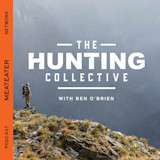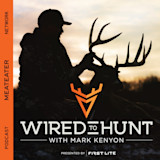
Every western hunter knows the feeling: waking up on opening morning of rifle season after months of anticipation, ready to hike into your honey hole. Dawn sneaks in as you crest your glassing knob, the same one you’ve sat on opening day for years—just you and the critters. As shooting light approaches, you make out movements on an adjacent slope, put your binoculars up for a close look, and—what the hell? Another hunter? You scan the rest of the basin, picking out more and more blaze orange blobs—on the ridges, in the meadows—every clearing has a hunter. Turns out your secret spot isn’t actually all that secret.
This seems to be part of a growing phenomenon across the West: more hunters, more “hardos” willing to hike deeper than the next guy, and tags that are harder and harder to draw. But, somehow, on the other side of the country, there appears to be the opposite trend. On January 24, Wisconsin DNR officials warned that the state’s wildlife management account will start the next budget cycle $16 million in the hole, due primarily to falling license sales.
The culprit? People in the state are aging out of hunting. “The baby-boom generation, which embraced deer hunting like no other generation before or after, is simply aging out and retiring from deer hunting,” DNR deer program specialist Jeff Pritzl told The Milwaukee Journal last fall. “They are slowly and gradually hanging up their blaze orange for the last time. We are losing a couple of percent every year. And we know that’s going to continue for the next decade.”
DNR board chairman Bill Smith, reiterated the severity of the predicament in an interview with PBS Wisconsin: “The long-term trend is fewer licenses, fewer hunters, and less revenue coming in and it’s going to get a lot worse before it gets better.” Models predict an annual loss of 1.9% in adult, male deer hunters every year in the state. Overall, in 2023, license sales were down 0.8% compared with 2022, for a total of 788,697 deer licenses sold last year.
MeatEater’s own Tony Peterson has insight on the situation as well: “Whitetail hunting is going through a demographic change, for sure,” he said. But there’s more to the story than that.
“There’s also the undeniable reality that hunters are looking to shore up spots so they can have quality hunting for themselves. The leasing movement is a huge part of this, but it’s also tied to trophy hunting to some extent,” Tony said. “This creates a situation where hunters lock up land for themselves, and the hunters who get locked out scramble for spots or outright quit. Couple this with the wolf issue in parts of a few states, and the decline of the traditional hunting camp, and it sure seems like whitetail hunter numbers will keep sliding.”
Out West, however, the trend seems to be the opposite. Take Colorado, for example—the state with the largest elk population. In 2002, Colorado sold 83,447 elk tags to residents and nonresidents combined. In 2021, the state sold 93,485 tags. That’s a 12% increase in just over a decade. Much of that can probably be chalked up to the ease of purchasing over-the-counter, nonresident elk tags in the state (anyone can buy an OTC bull tag in Colorado). Colorado also has a severe point creep issue for limited entry hunts, as more and more hunters put in for the same number of limited tags—to the point where a hunter could be too old to hunt the most coveted tag by the time he pulls.
Other states, like Idaho, saw smaller increases in hunter numbers over the same 2002-2021 time period—likely due to more restrictive OTC hunts. According to a report by the Council to Advance Hunting and the Shooting Sports, Idaho had a 1.5% increase in tag sales over the same decade-long period.
But ease of access can’t be blamed as the sole culprit in the crowding of western hunting grounds. Social media and digital influences surely draw new people to the sport every year with pictures of trophy animals, videos of once-in-a-lifetime hunts, and the allure of eating wild food. But that’s not to say the increase is a bad thing. The paradox is that more people in the woods also equates to more conservation advocates and folks who care about the resource. On the flip side, though, what hunter wants to see a pumpkin patch at his favorite spot?
While some might argue that hunter recruitment efforts are ill-advised, Tony isn't convinced. “There are compelling arguments for not recruiting more hunters, but I think they aren’t strong enough for us to gate-keep this amazing lifestyle," he said. "We need people paying to hunt and advocating for what we do, otherwise we will all lose out.”
“We don’t want nonhunters or anti-hunters footing the bill for game management or conservation in any way because when they have a say in the process, hunters will absolutely lose out,” Tony continued. “While fewer hunters on the landscape might make our personal hunting easier and more enjoyable, in the long run, it’s a lose-lose trend for us.”
Turning that trend around, however, might be harder than we think. But if Wisconsin is any indicator, it might be worth putting some effort into. The state Fish and Wildlife Account funds habitat work, game wardens, CWD monitoring, and fish stocking, among other things. If the fund continues to be in the red, it could lead to a positive feedback loop, with worsening hunting quality leading to even fewer hunters in the woods and even less money for conservation and management.
Is the solution state-by-state, or should there be a more united national campaign to bring on new hunters? Can we fund wildlife initiatives in ways other than tag sales? And above all else, do we even need more hunters? These are questions the hunting community will be dealing with in the coming years, and the issues are only going to become more intense.





